Blue Truck Book Reviews has moved! Please update your RSS feeds, email settings, and stalking spreadsheets (or however you keep track of these things).
Thank you so much for your continued readership. See you on the flip side!
Blue Truck Book Reviews has moved! Please update your RSS feeds, email settings, and stalking spreadsheets (or however you keep track of these things).
Thank you so much for your continued readership. See you on the flip side!
What’s more overdue than this blog post? Lots of things, but whatever. Onwards.
A few weeks ago (please let it only have been a few weeks), my friend Brian of The Cheek of God emailed and asked if I’d be interested in a guest review. Brian’s an excellent writer and an avid reader, and I trust his opinions about books, which is actually (unsurprisingly, characteristically, ridiculously) pretty rare.
I’ve been meaning to post about the thoughtful, beautifully written Crow Planet: Essential Wisdom for the Urban Wilderness by Lynda Lynn Haupt, but things got away from me. And really, Brian wrote a great review, and I’d be remiss to keep it from you any longer, so dang it, here it is.
—————————————————————————
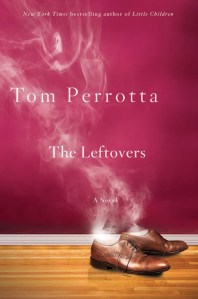 Tom Perrotta (Little Children, The Abstinence Teacher) is a friend of mine on Facebook. And we keep it real. For example, just the other day I told him that I had enjoyed his recent short story (“Senior Season”) more than I was enjoying his latest novel, The Leftovers (St. Martin’s Press, 2011). I was frustrated, having reached nearly page 100 and finding nary a compelling plot in sight. Even as a recovering Pentecostal, I still find the notion of a rapture of the chosen ones more than a tiny bit intriguing; I listen for the trumpet still today. So Perrotta’s premise, of a rapture-like “Sudden Departure” and how it affects one particular small-town family, drew me in.
Tom Perrotta (Little Children, The Abstinence Teacher) is a friend of mine on Facebook. And we keep it real. For example, just the other day I told him that I had enjoyed his recent short story (“Senior Season”) more than I was enjoying his latest novel, The Leftovers (St. Martin’s Press, 2011). I was frustrated, having reached nearly page 100 and finding nary a compelling plot in sight. Even as a recovering Pentecostal, I still find the notion of a rapture of the chosen ones more than a tiny bit intriguing; I listen for the trumpet still today. So Perrotta’s premise, of a rapture-like “Sudden Departure” and how it affects one particular small-town family, drew me in.
And then left me hanging. I wanted more, for the story to move forward, beyond those left behind to deal with the aftermath. They weren’t very interesting, after all. They just kept remembering they way things had been and spinning their wheels, only to crash into yet another day. A day with still no answers.
Others chimed in after I left my comment and told me to persevere. So I did. And a funny thing happened…I started to enjoy the story. As I spent more and more uninterrupted time with them, each character settled down into a familiar groove and just started living. The sort of living I admire, filled with surprises and knee-jerk emotions and contemplative moments where things almost start to make sense, only to vanish in a cloud of smoke. I began to care for these people, even as they did the most amazingly, and sometimes shockingly, unexpected things.
If time permits, read The Leftovers in as few sittings as possible. In and out of it didn’t work for me, and probably won’t for you either. Let it steal you away, like a rapture would. And enjoy the ride…
I make it a point, here on this blog, to stick to books. There are a variety of reasons for this, some of them are even important, but mostly I just want to talk about what I’m reading and not get into my embarrassments, paranoias, or neuroses. But I also believe, as Simon Sinek once said, “Your work is your own private megaphone to tell the world what you believe.” And so I would be remiss if I didn’t somehow bring up Violence UnSilenced.
I’ve never liked to read anything about domestic violence. I used to consciously avoid it when choosing the next book to read, let my eyes dart past it in the exceptional and usually horrifying instances when it warranted a few inches in the newspaper. And it went on like this for years.
And then something happened, as somethings are wont to do, and my life changed forever. I suddenly realized, with a clarity so devastatingly piercing I felt I’d been shot with an entire quiver of arrows, that domestic violence is not stereotypical, always obvious, or unique. There was one special arrow reserved for those things can’t happen to me.
I have never been abused or victimized by anyone, emotionally or physically, and it is one of my greatest blessings, but I can’t say the same for someone I loved, someone I still love, bone-deeply.
So now I read. Because if there is one thing I can do with my rage and heartbreak, with my regret that I did not see what I should have seen or heard what I should have heard, it to face this reality. I can bear witness, and so can you.
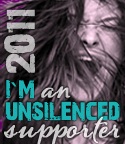 Violence UnSilenced was created by Maggie Ginsberg-Schutz in 2009 to eradicate abuse by breaking down the pervasive culture of shame, blame, and silence that has built up around domestic violence. The site supports victims and others whose lives have been touched by abuse by giving them a place to speak out about what happened to them, by providing a space for their collective voices to rise up and unsilence.
Violence UnSilenced was created by Maggie Ginsberg-Schutz in 2009 to eradicate abuse by breaking down the pervasive culture of shame, blame, and silence that has built up around domestic violence. The site supports victims and others whose lives have been touched by abuse by giving them a place to speak out about what happened to them, by providing a space for their collective voices to rise up and unsilence.
Domestic violence can happen to you, or to someone you love, or to someone you know, and it does happen to countless people, in your town, in your workplace, in your social circle, in your backyard. This is everyone’s issue. Just because something is tough or horrifying or senseless does not, as readers and as humans, give us reason to look the other way.
* * * * * * * *
October is Domestic Violence Awareness Month, and it seems fitting that this month, Violence UnSilenced will become an official non-profit organization. I’m am incredibly honored and excited to be joining this vital cause as a member of the Violence UnSilenced Board of Directors.
Please take the time today to read the launch post from Maggie. Giving voice to each experience is not only powerful, it’s how movements spread, so I encourage you to speak out yourself.
You can also help us build a strong foundation by taking the pledge, Liking Violence UnSilenced on Facebook, following Violence UnSilenced on Twitter, and following the company on LinkedIn. Your support matters!
Most importantly, continue to speak out against domestic abuse, sexual abuse, and sexual assault in your own communities.We need your voice.
Thank you.
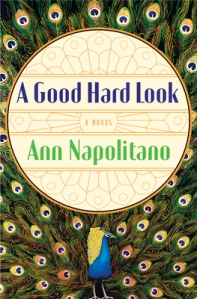 A Good Hard Look by Ann Napolitano is the exquisitely written, emotionally taut, and compelling story of four people doing their best to navigate their lives in a small Southern town. That one of these people is a fascinating and fictionalized version of Flannery O’Connor only adds to the complicated tapestry Napolitano weaves here, braiding the sins humans can commit out of boredom with the pain of a physical disease and the events of a tragic afternoon.
A Good Hard Look by Ann Napolitano is the exquisitely written, emotionally taut, and compelling story of four people doing their best to navigate their lives in a small Southern town. That one of these people is a fascinating and fictionalized version of Flannery O’Connor only adds to the complicated tapestry Napolitano weaves here, braiding the sins humans can commit out of boredom with the pain of a physical disease and the events of a tragic afternoon.
Napolitano’s gift is getting inside the heart of her characters, so that readers are rooting for every one of them, so that it’s possible – even when they have done terrible, selfish things – to forgive them their frailty. Her believable, research-based portrait of Flannery, channeled through the menagerie of peacocks that roam the O’Connor estate, screaming in the night and eating each flower as it blooms, heightens the sense that there is redemption to be found, to be sure, but only after we realize we all a little flawed, and a little doomed.
(If, like me, this book sends you on a mad quest for nonfiction about FC, I urge you to consider Flannery: A Life of Flannery O’Connor by Brad Gooch.)
These days, it seems all I require from my books is that I am able to lose myself inside of them. So, despite my high hopes that The Weird Sisters by Eleanor Brown would be positively packed with Shakespeare, and instead it was, for me, not-quite-packed-enough, I still read this novel happily in one sitting.
I suppose for anyone who has a less obsessed relationship with literature, there would have been plenty of Bill and more. But this is ultimately the story of three sisters, each searching in their own way: the oldest for freedom and the bravery to find it, the middle for salvation from her considerable sins, and the baby for roots that will hold her steady.
The reward, here, is not the well-chosen quotes from plays and sonnets woven into the text nor even Brown’s deft handling of the multi-faceted plot, but the fates that unfold after a push through the first 50 somewhat awkward pages: what happens to the Weird Sisters while they struggle to accept who they really are, rather than the stories they have told themselves about who they should be.
Okay, so:
The Help by Kathryn Stockett. Go read it. It’s as good as everyone you know has said (wailed, screamed) it is. As if it wasn’t enough to write a compelling novel about a very real time in American history, Stockett has the nerve to be an excellent writer who created vivid, interesting characters and a delicately suspenseful plot. Skip whatever else you’ve got on the TBR pile. Go read this now.
What Alice Forgot by Liane Moriarty is the kind of book I dream about finding on the shelves. (You know the ones. They suck you in and keep you there, blissfully, for days.) I don’t know why I bother mentioning that Moriarty is a good writer, given that I don’t bother reading anything by anyone if it’s not well-written, but she is a good writer. This novel’s creative plot, coupled with realistic and complicated family dynamics probably anyone can relate to, makes this story about one woman’s unexpected and accidental amnesia a perfect one to disappear inside.
Russian Winter by Daphne Kolatay. My grandmother told me to read it, and really, she’s never wrong. Kolatay has crafted a fascinating and atmospheric historical novel, and I’m not even into ballerinas. That she manages to jump through both time and perspectives with no loss of momentum or character development is a testament not only to her writing ability but to the pull of a great story. I’m also pretty sure that right about now you’re willing to read anything that involves winter.
Swamplandia! by Karen Russell is the best book I’ve read so far this year, and it will take a lot to change that opinion by December 31. The only thing more breathtaking than the haunting, imaginative, and sad tale of the Bigtree siblings is Russell’s tremendous talent. This was some of the most incredibly creative writing I’ve read in years, with line-by-line inventiveness that positively ripped my head off (read the first few pages to see exactly what I mean). My grief at the end of this expertly woven, heartbreaking novel was palpable.
* * * * * * * *
So hey, you may have noticed this post is different from the ones that came before. Congratulations. You’ve figured out that things around here are going to change. Turns out I am better with short and sweet, especially if you’re into short more than sweet. (This surprises no one, I’m sure.) Anyway, thanks for your patience.
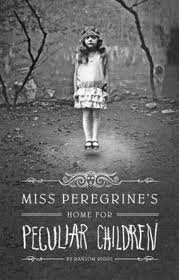 Looking for a book full of creepy photos of 1940s-era children? Look no further than Miss Peregrine’s Home for Peculiar Children, a quick, exciting, and well-written YA novel from author Ransom Riggs.
Looking for a book full of creepy photos of 1940s-era children? Look no further than Miss Peregrine’s Home for Peculiar Children, a quick, exciting, and well-written YA novel from author Ransom Riggs.
Set briefly in the U.S. — home to 16-year-old Jacob, who has just witnessed the violent death of a beloved member of his family — the tale moves to a small, foggy island off the coast of Wales, and time immediately gets tricky.
Peppered with a motley cast of “peculiar” children and the people who surround them, Riggs weaves a taught and haunting fantasy as clever as it is dark. Recommended for fans of the Beautiful Creatures trilogy by Kami Garcia and Margaret Stohl, The Sister by Poppy Adams, or The Thirteenth Tale by Diane Setterfield, Miss Peregrine’s Home is an excellent place to repose on a hot summer day, provided you don’t mind periodically looking over your shoulder.
* * * * * * * *
This book was published by Crown Publishers in February 2011. For more information, visit the author’s website, which includes a properly creepy book trailer. (FTC Disclosure: This review was based on a copy of the book that I borrowed from the public library.)
An entire month has whooshed by here on Blue Truck Book Reviews, like the breeze from the dance floor at a wedding when you are small and playing under a table covered in a long white cloth. I haven’t been hiding in any secret places or doing much playing, but I have been very busy preparing for a huge and important event coming up on May 14: I’m graduating from college.
Because it’s taken me ten long, hard, rightful years to get here, this is an emotional achievement for me. So while I’ve been working hard doing all the things I normally do plus all the extra things I must do to walk across the big stage, I’ve also been careful with myself: making sure I’m getting enough rest and exercise; making sure my soul is fed with good books; making sure I’m allowing myself to be in the moment instead of feeling guilty about x, y, z, including posting reviews here. I have been pleasantly surprised (One Was a Soldier by Julia Spencer-Fleming), utterly riveted (A Discovery of Witches by Deborah Harkness, and The Gospel of Anarchy by Justin Taylor), and left gasping with heartache and recognition at one of the best books I’ve read so far this year (You Know When the Men Are Gone by Siobhan Fallon), but mostly I have been burrowed into reading for comfort, and for me, that’s one of the best being in the moments there is.
I may post reviews of these books and the others I’ve read since the end of March eventually, but right now, I simply want to enjoy my accomplishment to the detriment of most of my various pursuits (my job, my writing, and my new vegetable garden notwithstanding). I hope you are all well.
As always, happy reading.
 When Marie Grosholtz first learns that the royal family is to visit the wax museum she runs with her step-father, she is overjoyed at the publicity and money she knows it will bring. But she never expects to be asked to become a tutor to the king’s sister, and she doesn’t know that these are the first steps in a long journey that will require all her strength to survive.
When Marie Grosholtz first learns that the royal family is to visit the wax museum she runs with her step-father, she is overjoyed at the publicity and money she knows it will bring. But she never expects to be asked to become a tutor to the king’s sister, and she doesn’t know that these are the first steps in a long journey that will require all her strength to survive.
Madame Tussaud: A Novel of the French Revolution by Michelle Moran is only one woman’s story of the harrowing years between 1788 and 1799, when the absolute monarchy that had ruled France for more than nine hundred years collapsed as a result of a sustained assault from both liberal political groups and masses of citizens on the street. The years that followed this transformation were brutally bloody, rendering Jean-Paul Marat’s famous statement that “in order to ensure public tranquility, two hundred thousand heads must be cut off” more true than false, and resulted in a France that was forever changed.
That Marie Grosholtz – the woman who later became internationally famous, and whose wax empire still thrives today – survived is almost unbelievable, and Moran tells it for the surprising and fascinating story it is. Though her writing is quite good, she thrives on pure story, the plot progressing like a newspaper – or a wax museum – perfectly in pace with historical events. Add Marie, a ambitious, intelligent, and fiercely independent woman to this heady mix, and the excitement of revolution practically explodes off the page.
Highly recommended both for fans of history and historical fiction, Madame Tussaud: A Novel of the French Revolution is an enthralling story of one country’s most tumultuous and uncertain period, and one woman’s unlikely, unexpected survival.
* * * * * * * *
This book was published by Crown Publishers in February 2011. For more information, visit the author’s website, which includes an excerpt from this novel and other fun things. Purchasing this book from an independent bookseller and supporting me as an IndieBound affiliate will help the masses keep their heads. As always, happy reading.
FTC Disclosure: This review was based on a copy of the book that I received from the publisher.
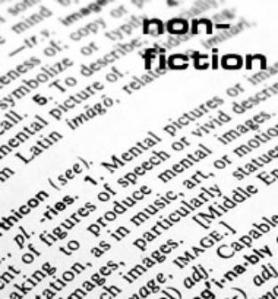 Nonfiction can be tricky, but when it’s good, it’s amazing.
Nonfiction can be tricky, but when it’s good, it’s amazing.
Below are my top recommendations for nonfiction reads (in alphabetical order by author, ’cause that’s how nonfic rolls.)
The Diving Bell & The Butterfly: A Memoir of Life in Death, Jean-Dominique Bauby
Candy Girl: A Year in the Life of an Unlikely Stripper, Diablo Cody
Abraham: Journey to the Heart of Three Faiths, Bruce Feiler
Land of Lincoln: Adventures in Abe’s America, Andrew Ferguson
The Know-it-All: One Man’s Quest to Become the Smartest Person in the World, A.J. Jacobs
Traveling Mercies: Some Thoughts on Faith, Anne Lamott
Grace (Eventually): Thoughts on Faith, Anne Lamott
Still Life: Adventures in Taxidermy, Melissa Milgrom
The Orchid Thief: A True Story of Beauty and Obsession, Susan Orlean
A Crime So Monstrous: Face-to-Face with Modern Day Slavery, E. Benjamin Skinner
The Immortal Life of Henrietta Lacks, Rebecca Skloot
Stiff: The Curious Lives of Human Cadavers, Mary Roach
Bonk: The Curious Coupling of Science and Sex, Mary Roach
Cleopatra: A Life, Stacy Schiff (reviewed here)
Rats: Observations on the History & Habitat of the City’s Most Unwanted Inhabitants, Robert Sullivan
Manhunt: The 12-Day Chase for Lincoln’s Killer, James Swanson
Assassination Vacation, Sarah Vowell
Generation Kill: Devil Dogs, Captain America, and the New Face of American War, Evan Wright
* * * * * * * *
(This post goes out to Shayla Dvorak, who asked me for recommendations for her nonfiction book group. Thanks for opening the wormhole into my brain.)
As always, happy reading!